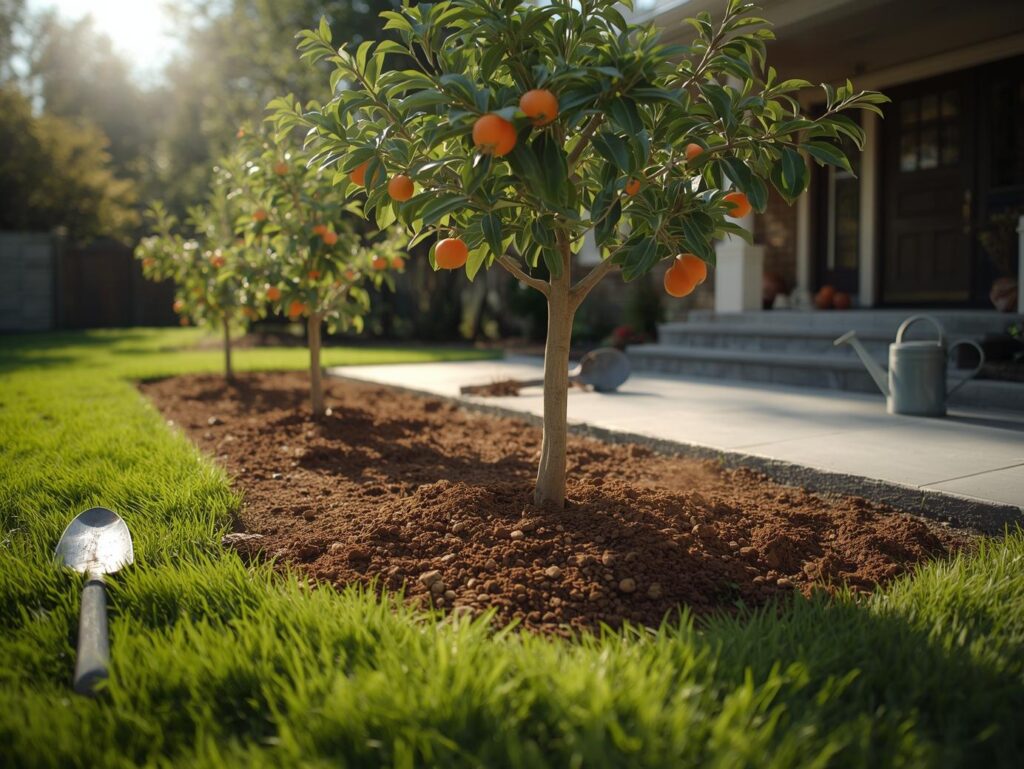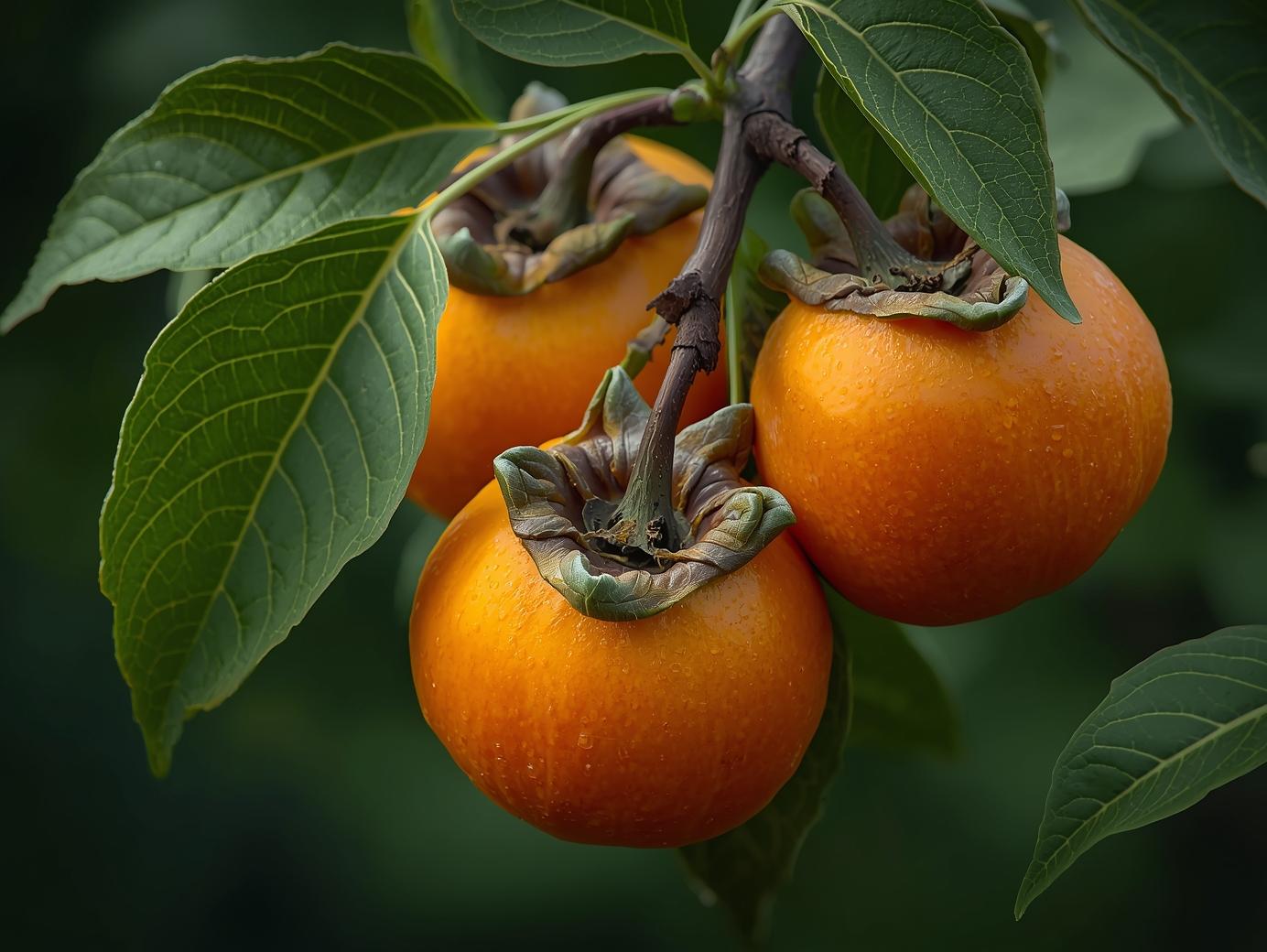Persimmon trees offer a unique blend of ornamental beauty and delicious fruit, making them an excellent choice for home courtyards across the USA. Known for their vibrant orange fruits and attractive foliage, persimmons can adapt well to various climates, especially in USDA zones 7 through 10. Whether you’re a beginner or an experienced gardener, growing persimmons requires careful attention to soil conditions, planting techniques, and ongoing care to ensure healthy growth and fruitful harvests.
This guide will walk you through essential steps like soil selection, site preparation, watering, and pest management to help you cultivate thriving persimmon trees in your courtyard garden.
Soil Selection
Persimmon trees prefer well-draining soils with a slightly acidic to neutral pH, ideally between 6.0 and 7.5. Loamy soils rich in organic matter provide the best environment for root development and nutrient uptake. While persimmons are somewhat adaptable to various soil types, poorly drained or heavy clay soils can lead to root rot and poor growth.
Improving soil structure with compost or aged manure can enhance drainage and fertility in less-than-ideal conditions. Conducting a soil test before planting helps you determine the soil’s pH and nutrient profile, allowing you to amend the soil accordingly. Proper soil preparation is key to establishing a strong foundation for your persimmon tree.
Site Preparation
Choosing the right location in your courtyard is vital for persimmon tree success. Persimmons require full sun, meaning at least six hours of direct sunlight daily to produce sweet, flavorful fruit. Good air circulation around the planting site helps reduce the risk of fungal diseases and encourages healthy growth.
Before planting, clear the area of weeds, rocks, and debris. Loosen the soil to a depth of 12 to 18 inches, incorporating organic matter to improve fertility and soil texture. Installing a trellis or support is not typically necessary for persimmons, but providing ample space for the tree to grow both vertically and horizontally is important, as mature trees can reach 15 to 30 feet in height.
Planting

The ideal time to plant persimmon trees in most parts of the USA is in early spring or late fall while the tree is dormant. This timing allows the roots to establish before the growing season begins. When planting, dig a hole twice as wide as the root ball but no deeper than its height to avoid burying the root collar.
Position the tree carefully in the hole, making sure the root flare is at ground level or slightly above. Backfill with native soil mixed with compost, and water deeply after planting to settle the soil and eliminate air pockets. Mulching around the base helps conserve moisture and suppress weeds during establishment.
Watering
Newly planted persimmon trees require consistent watering to establish a healthy root system. Deep watering once or twice a week is preferable to frequent shallow watering, as it encourages roots to grow deeper into the soil. The soil should remain moist but not saturated to prevent root diseases.

Once mature, persimmons are relatively drought-tolerant but will benefit from supplemental watering during dry spells, especially when fruit is developing. Applying mulch around the base of the tree helps retain soil moisture and regulate temperature, supporting overall tree health.
Fertilizing
Fertilizing persimmon trees correctly promotes vigorous growth and abundant fruit production. In early spring, apply a balanced fertilizer with equal parts nitrogen, phosphorus, and potassium to encourage healthy foliage and root development. Avoid over-fertilizing, as excessive nitrogen can lead to lush leaves but reduced fruit yields.
Additional feeding may be necessary after fruit set to support fruit growth and quality. Organic fertilizers, such as compost or well-rotted manure, can also improve soil health while supplying essential nutrients. Regular soil testing helps determine nutrient needs and prevents over- or under-fertilization.
Pruning & Training
Pruning persimmon trees maintains their shape, improves air circulation, and encourages productive fruiting. During the dormant season, remove dead, damaged, or crossing branches to promote a strong framework. Young trees benefit from training to develop a well-structured canopy that supports fruit production.
Pruning also helps control the size of the tree, making it easier to harvest fruit in a home courtyard setting. Avoid heavy pruning during the growing season, as this can stress the tree and reduce fruit yields. Maintaining an open center or vase shape is often recommended to maximize sunlight penetration.
Pest & Disease Control
While persimmons are relatively hardy, they can be affected by pests such as scale insects, aphids, and persimmon fruit moths. Diseases like leaf spot and anthracnose may also occur, particularly in humid environments. Early detection and proactive management are essential to prevent significant damage.
Good cultural practices, including proper watering, pruning, and sanitation, help reduce pest and disease problems. Encouraging beneficial insects and using organic pest controls can keep pest populations in check without harming the environment. Regular inspection of trees ensures timely intervention if issues arise.
Fruiting & Harvest
Persimmon trees generally begin bearing fruit within three to six years after planting. The fruit typically ripens in the fall, changing color from green to vibrant orange or reddish hues depending on the variety. Harvesting at the right time is crucial; fully ripe persimmons are soft and sweet, while unripe fruit may be astringent and unpleasant.

Pick fruit carefully to avoid bruising, and store it in a cool place if not consuming immediately. Persimmons can be enjoyed fresh, dried, or used in cooking and baking, adding a unique flavor to your homegrown harvest. Regular harvesting encourages continued fruit production throughout the season.
